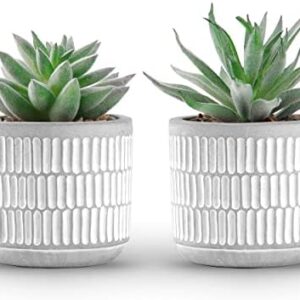So, you want to start growing your own fresh herbs and vegetables at home. That’s great! There’s something truly satisfying about being able to walk out into your backyard and pick fresh mint for a mojito or ripe tomatoes for a salad.
But if you’re new to gardening, it can seem a bit overwhelming. Where do you start? What do you need to know? Don’t worry, I’ve got you covered with some tips for getting started on your gardening journey.
First things first, consider your space. Do you have a backyard with plenty of sunlight, or just a small balcony? The good news is you don’t need a lot of space to grow herbs and vegetables. Many can be grown in pots or raised beds, so even if you only have a small area to work with, you can still have a bountiful garden.
Next, think about what you want to grow. Are you a basil lover, or do you want to try your hand at growing some cherry tomatoes? Start with a few herbs and vegetables that you know you’ll use regularly. Some easy-to-grow options for beginners include basil, parsley, mint, cherry tomatoes, and bell peppers.
Now, let’s talk about soil. Good, nutrient-rich soil is the foundation of a successful garden. You can buy pre-mixed soil specifically for herbs and vegetables at your local garden center, or you can make your own using a combination of compost, peat moss, and vermiculite. Make sure your soil drains well to prevent root rot and other problems.
When it comes to planting, follow the instructions on the seed packets or plant tags. Most herbs and vegetables prefer to be planted in the spring after the last frost, but some can be started indoors earlier. Make sure to space your plants properly to allow room for them to grow.
Watering is another important aspect of gardening. Most herbs and vegetables like to be consistently moist but not waterlogged. Check the moisture level of the soil regularly and water when needed. It’s best to water in the morning to prevent evaporation during the heat of the day.
Now, let’s talk about sunlight. Most herbs and vegetables need at least 6-8 hours of sunlight a day to thrive. If you’re growing in a shady area, consider investing in a grow light to supplement natural sunlight. Rotate your plants regularly to ensure they’re getting even sun exposure.
Pests and diseases can be a challenge for any gardener, but there are ways to prevent and treat them. Keep an eye out for common pests like aphids, caterpillars, and slugs, and treat them with natural remedies like neem oil or insecticidal soap. Mulch around your plants to prevent weeds and retain moisture.
Harvesting your herbs and vegetables is the most fun part of gardening. Most herbs can be harvested as needed by snipping off a few leaves or stems. Vegetables like tomatoes and peppers should be picked when ripe to encourage more fruit production. Don’t be afraid to experiment with different recipes and enjoy the fruits of your labor.
As you gain more experience with gardening, you may want to expand your repertoire and try growing new herbs and vegetables. There are so many varieties out there to explore, from exotic herbs like lemongrass to heirloom tomatoes in all shapes and colors.
Remember, gardening is a learning process, and you may encounter some setbacks along the way. Don’t get discouraged if a plant doesn’t thrive or a pest infestation takes over. Take it as a learning opportunity and try again next season.
In conclusion, growing your own herbs and vegetables at home is a rewarding and fulfilling experience. With a little patience, knowledge, and hands-on experience, you can enjoy a bountiful harvest of fresh, flavorful produce right outside your door. So roll up your sleeves, get your hands dirty, and start growing your own garden today. Happy gardening!






